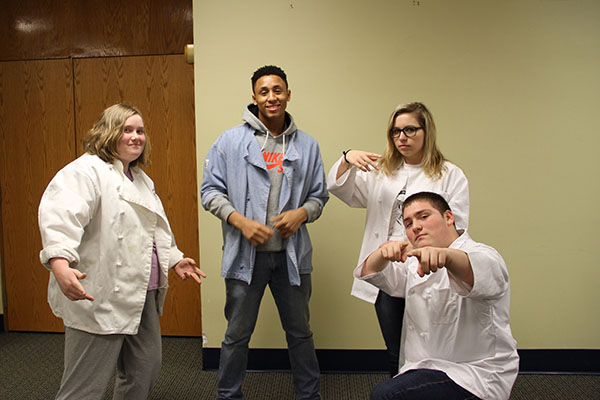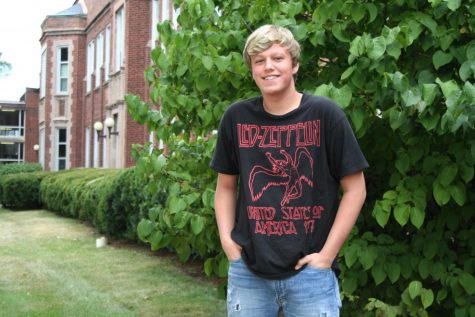Trying to stay flexible
Farlee and Sarkady work to bring Applied Arts up to date

The students in the Hospitality Industry class take a break from preparing hors d’oeuvres for the Red Carpet Event for “Bye, Bye Birdie” to pose for a photo. From left to right: Juniors Ellie Richards and Amir Alvarado and Senior Julia Waterloo and Peter Fudacz.
March 13, 2015
Due to policies that RB classes must have 20 students enrolled to run the course without requiring a board waiver, Applied and Fine Arts Instructional Coach Patti Farlee and Applied Arts teacher Patty Sarkady knew they had to make some changes to their department curriculum.
“First of all, there aren’t any new classes; there’s been a hold on new,” Farlee said. “So, what they are allowing us to do is alter or tweak a class.”
According to Principal Kristin Smetana, an administrative decision from the past few years limits new classes to only be a revision of classes that have not run in a while. Only classes whose curriculum is required by the College Board, like a new Computer Science Principles class, have been added.
Due to budgetary constraints, some Applied Arts courses, like many other departments, have been reduced due to low enrollment. Classes such as Hospitality and Advanced Food Service now run every other year in order to spark interest and hopefully have a full class for the next year.
“The Hospitality and the Honors Foods class have been on the book but they just alternate every other year,” Farlee said.
Still, Farlee has adapted her curriculum to help her students follow their interests even if the formal classes are not being offered.
“[While we don’t run the classes every year,] because I have so many kids who are interested in being a dietitian or who want to work in a restaurant during college that I still allow the four kids during my Foods II class to have their own kitchen and do their own projects,” she said.
Beyond just the Foods courses, business courses such as Accounting, Business Foundations Web Design, and Business Marketing have been combined under the titles Business Principles and Accounting I and Business Marketing and Web Design in order to meet the required enrollment without adding new classes.
“The classes that were tweaked are the business foundations and the accounting class,” she said. “We have always had these classes on the books separately and we would get anywhere from 12-15 enrolled and that’s just not enough to run a class.”
In today’s world, marketing and web design have become intertwined, so Farlee and Sarkady altered the course descriptions to merge them into one class. Sarkady is hoping this new course will include an app portion. She also wants to teach about different advertising ideas and public relations strategies while using industry standard programs like Adobe Dreamweaver and HTML coding.
After registration and recent sectioning meetings, the two newly designed courses both seem to have reached the 20-student threshold and will likely run.
Farlee is optimistic about the new plan.
“We feel that we are really getting students prepared to look at [business] as a career option and to broaden their skills and knowledge to get them ready to move on,” Farlee said. “In today’s world, you have to have that technological support, so it just made sense to us.”
The goal for Farlee and Sarkady is to provide students with the education that will most directly apply to their futures in college and beyond.
“We really believe with all the classes in the applied arts that that’s what we are trying to do,” Farlee said. “We are trying to provide students the opportunity to explore a career pathway that piques their interest, so those expensive college dollars have more of a focus.”


